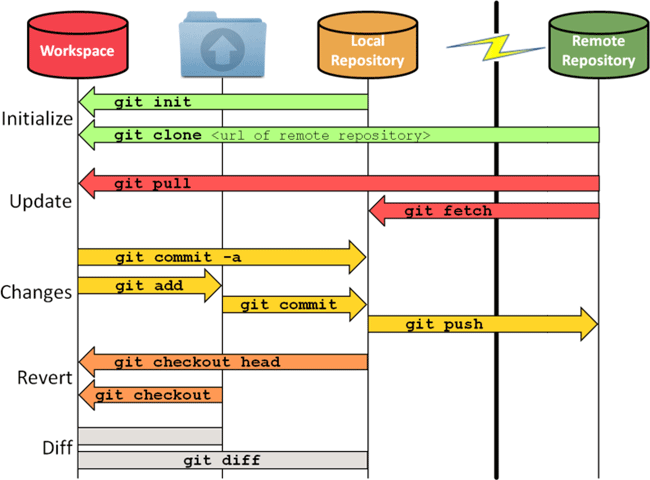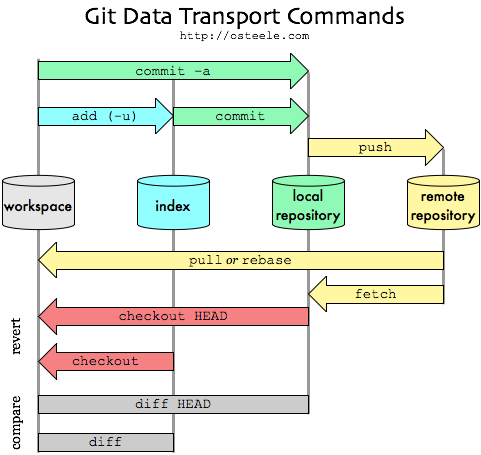:r !echo "foo"
//inserting a new line after current line
o
//inserting a line before current line
O
//Piping output of a command to vim and 'save as'
uname | vi -
:saveas
//VIM Terminology
yank (copy in windows lingo)
delete (cut in windows lingo)
put (paste in windows lingo)
//yank (copy) a line
yy
//delete (cut) a line
dd
//put (paste) a line
p
//using marks to yank multiple lines
ma
y'a
//Example:
ma~~~~~~~~~~~~~~
~~~~~text~~~~~~~~
y'a~~~~~~~~~~~~~~
//Inserting a character X number of times
<ESC>
250
i
a
<ESC>
//cut a line
v this-is-the-line d
//undo
u
//search
/
//search next
n
//write and copy (save and exit in windows lingo)
wq
//the ! overwrites
wq!
//comparing two files
vimdiff -O test1.txt test2.txt
vimdiff -o test1.txt test2.txt //horizontally
//opening multiple files
vim -O file1.txt file2.txt
vim -o file1.txt file2.txt //horizontally
//creating another file while editing one
:vert new test.txt
:vsplit test.txt
:vsp test.txt
//horizontally
:split
:sp
//changing windows
ctrl ww
//go to specific line
:77
//practice
shell$ vimtutor
[ view entry ] ( 1949 views ) | print article
/*
You can delete the mbr (master boot recored) using the dd command itself. The following command will completely delete your MBR, which contains all your partition information. So make sure you use the correct device name:
*/
# dd if=/dev/zero of=/dev/sdc bs=512 count=1
http://www.cyberciti.biz/faq/linux-clea ... d-command/
[ view entry ] ( 1932 views ) | print article
Speed up load times by automatically compressing CSS, HTML and JavaScript files in Apache. Compressed files are smaller and faster to send, for Apache 2.x, use mod_gzip or the built-in mod_deflate module.
The mod_gzip and mod_deflate modules both add file compression features to Apache. When enabled and configured, text-based files and script output is automatically compressed before it is sent to the visitor’s browser. While the effort to compress a file slows down the web server, this slow down is easily offset by the time saved to send the much smaller compressed file. This is particularly true when the server or the site visitor have a slow network connection.
[ view entry ] ( 2074 views ) | print article
/*
One of the most keenly-anticipated CSS3 properties is border-radius. Web designers will no longer have to resort to complex table structures using custom-made corner graphics or including arcane JavaScript files in order to produce designs with rounded corners. The border-radius CSS property allows Web authors to define how rounded border corners are. Check browser support.
*/
<!DOCTYPE html>
<html>
<head>
<style>
div
{
border-style: solid;
border-width: 2px;
-moz-border-radius: 15px;
-webkit-border-radius: 15px;
border-radius: 15px;
}
</style>
</head>
<body>
<div>The border-radius property allows you to add rounded corners to elements.</div>
</body>
</html>
[ view entry ] ( 2550 views ) | print article
# filter logs by date range
[acool@acool topsecret-host]$ git log --date=iso --pretty=format:"%ad %H - %an: %s" --after="2014-06-01" --until="2014-11-31" > commits-2014-06-to-2014-11.txt
//revert your working copy
git rm -r .
git checkout SHA1 .
//or (irreversible)
get reset --hard SHA1
//New repository(execute in project directory) (..I think git clone does this)
git init
//Listing, creating or deleting branches
git branch
//Changing branches
git checkout
//Committing changes
git commit
//Download remote repository
git clone
//Updating local repository
git pull //it fetches and merges remote repository with local repository (equals to: git fetch & git merge)
//Uploading local repository to remote repository
git push
//To see status and log entries run:
git status
git log
git log --stat SHA1
git log --name-status SHA1
git log -n 1 //last commit
//Workflow:

...another workflow example:

[ view entry ] ( 2181 views ) | print article
Switch(config)# no monitor session 1
Switch(config)# monitor session 1 source interface fastethernet0/1
Switch(config)# monitor session 1 destination interface fastethernet0/8
[ view entry ] ( 2869 views ) | print article
This tutorial demonstrates how to configure GRE over IPsec to connect two remote sites and to allow them to exchange routes dynamically with EIRGP.
http://www.angelcool.net/tutorials/cisc ... _EIGRP.pdf
[ view entry ] ( 2350 views ) | print article
//using tftpd32 server
rommon 36 > TFTP_SERVER=172.16.1.8
rommon 37 > tftpdnld
IP_ADDRESS: 172.16.1.33
IP_SUBNET_MASK: 255.255.255.0
DEFAULT_GATEWAY: 172.16.1.1
TFTP_SERVER: 172.16.1.8
TFTP_FILE: c1700-adventerprisek9-mz.124-7.bin
//If you want to boot from the image on the TFTP server without writing it to flash then use the command: tftpdnld -r
[ view entry ] ( 2171 views ) | print article
//problem:
ssh user@cisco_switch
//returns:
ssh_rsa_verify: RSA modulus too small: 512 < minimum 768 bits
key_verify failed for server_host_key
//solution (use SSHv1)
ssh -1 user@cisco_switch
/*...and if you have access to configuration mode enable larger RSA modulus in router. The modulus of the ssh RSA key pair on the switch/router is too small. If you have access, generate a new key pair on the switch/router with a larger modulus. */
crypto key generate rsa general-keys modulus 1024
..as always :)
[ view entry ] ( 1712 views ) | print article
//local network
//LAN IP addres 10.0.0.0 255.255.255.0
//R2(local router) public address: 23.0.1.0 255.255.255.0
crypto isakmp policy 1
authentication pre-share
exit
crypto isakmp key cisco address 56.2.11.2
//interesting traffic
access-list 100 permit 10.0.0.0 0.255.255.255 192.168.1.0 0.0.0.255
//transform set
crypto ipsec transform-set MYSET esp-sha-hmac esp-aes
//crypto map(bind all together)
crypto map MYMAP 1 ipsec-isakmp
set transform-set MYSET
set peer 56.2.11.2
match address 100
exit
//turn on policy (interface with public address)
int fa0/0
crypto map MYMAP
exit
===============================================================================
//remote network
//LAN IP address 192.168.1.0 255.255.255.0
//R4(local router) public address: 56.2.11.2
crypto isakmp policy 1
authentication pre-share
exit
crypto isakmp key cisco address 23.0.1.2
//interesting traffic
access-list 100 permit 192.168.1.0 0.0.0.255 10.0.0.0 0.255.255.255
//transform set
crypto ipsec transform-set OTHER_MYSET esp-sha-hmac esp-aes
//crypto map(bind all together)
crypto map MYMAP 1 ipsec-isakmp
set transform-set OTHER_MYSET
set peer 23.0.1.2
match address 100
exit
//turn on policy (interface with public address)
int fa0/0
crypto map OTHER_MYMAP
exit
//Now local hosts should be able to ping remote hosts
//verification commands
show crypto ipsec sa
/* IKE phase 1 tunnel is for private use when the two edge routers(R2 &R4) need to talk to each other,and it's used to create the IKE phase 2 tunnel (also called the IPSec tunnel).*/
: )
[ view entry ] ( 1829 views ) | print article
<<First <Back | 11 | 12 | 13 | 14 | 15 | 16 | 17 | 18 | 19 | 20 | Next> Last>>
